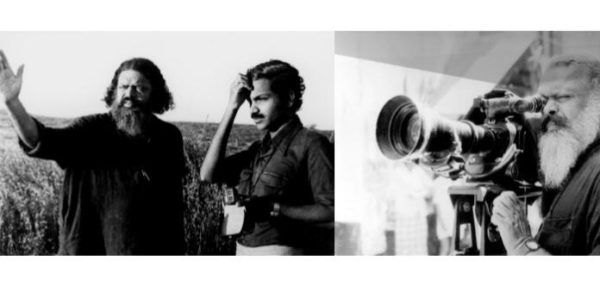Kummatty (1979), the Kerala State Award-winning Malayalam Children’s film written and directed by legendary filmmaker G Aravindan, has been restored by Martin Scorsese’s The Film Foundation in association with the Film Heritage Foundation and Cineteca di Bologna.
The film was restored at the L’Immagine Ritrovata laboratory in Bologna, Italy and will have its world restoration premiere at the ongoing Il Cinema Ritrovato festival.
Aravindan, one of the pioneers of parallel cinema in Malayalam, was a recipient of India’s fourth-highest civilian award Padma Shri in 1990. In a career spanning from 1974 to his death in 1991, he worked on around 21 projects including feature films, documentaries and short films.
Aravindan was known for his frequent collaborations with cinematographer Shaji N Karun, who worked on Kummatty as well. The duo also collaborated on other National and State award-winning films like Chidambaram, Thampu, Esthappan, and Oridathu.
Speaking to Silverscreen India, cinematographer-turned-director Shaji, who aided in the restoration of Kummatty, said he is glad that Aravindan’s classic was chosen for restoration as it is an “important film” that needs to be preserved.
“Kummatty is a film that is all about the idea of innocence and childhood. Humans tend to lose innocence when they become more and more aware of the world. And the film highlights the fantasies and wondering ability of children that needs to be cherished,” he added.

According to The Film Foundation, Kummatty follows the titular Pied Piper-like character from Malabar folklore. Part-myth part-magician, he is the bogeyman of a grandmother’s tale who materializes one day, mingles with the children and weaves a spell of carefree abandon. His spell turns the children into animals.
Shaji added that the film was widely appreciated by audiences from Japan and western countries for its portrayal of native traditions and therefore it must be preserved for future generations.
The cinematographer-filmmaker believes that the motive of cinema is not just to entertain the audience. “Cinema has the ability to highlight various issues. It has a cultural function as well and Kummatty is one such film that documents a culture. It’s a film that should also be watched for its portrayal of emotions, the visuals, and the overall philosophy,” he said.
About the process of film restoration, Shaji said, “The first choice for restoration of films shot using analogue camera is the negative of the film. But in the case of Kummatty, we have lost the negative. So we had to restore it from a print. Restoring a film from a bad print is laborious because it takes a lot of time to reconstruct it.”
Cecilia Cenciarelli of Fondazione Cineteca di Bologna, an internationally recognised film archive, said in a statement that only two 35mm prints of Kummatty survived and “are the result of a not-so-distant past when film negatives were copied and then discarded, sometimes leaving behind only projection prints.”
“The two copies were naturally worn-out, very dirty and deeply scratched, one containing a consistent vertical green line on the right-hand side of the image, which required painstaking frame-by-frame work to remove,” she added.

Established in 1990 by veteran American filmmaker Scorsese, The Film Foundation is a non-profit organisation dedicated to protecting and preserving motion picture history. TFF’s World Cinema Project, under which Kummatty is being restored, was established in 2007 and has restored 44 films from 26 different countries, representing the rich diversity of world cinema.
Calling Aravindan a ‘visionary director’, Scorsese said in a statement, “Kummatty is considered among his greatest work. The Film Foundation’s World Cinema Project will share this film with the wider audience it deserves, making it a true cinematic discovery.”
The Film Heritage Foundation, the not-for-profit organisation set up by Shivendra Singh Dungarpur in 2014, is dedicated to supporting the conservation, preservation, and restoration of the moving image and to developing interdisciplinary programmes to create awareness about the language of cinema. Dungarpur had first collaborated with Scorsese’s TFF in 2012 for the restoration of the Hindi film Kalpana (1948).
In a press release, Dungarpur said he was delighted when TFF’s World Cinema Project agreed to restore Kummatty. “I travelled to Kollam in Kerala to meet Mr K Ravindranathan Nair of General Pictures, the producer of five of Aravindan’s films, including Kummatty. He very graciously agreed to give permission for the restoration and for us to access the prints from the National Film Archive of India.”
Recommended
Dungarpur also added that he hopes to restore another of Aravindan’s films, Thampu (1978), in the future.
Kummatty was restored in 4K using the best surviving element: a vintage 35mm print struck from the original camera negative and preserved at the National Film Archive of India. A second 35mm print with English subtitles was used as a reference. Shaji supervised the colour grading and he, along with Ramu Aravindan, son of late filmmaker Aravindan, helped to recapture the original aesthetics of the film.



